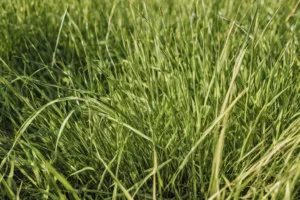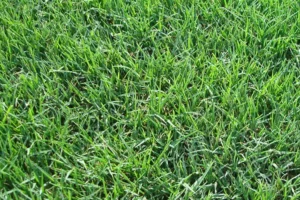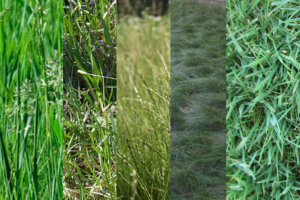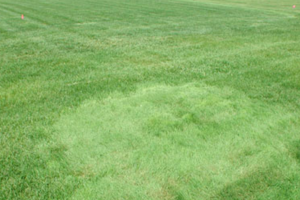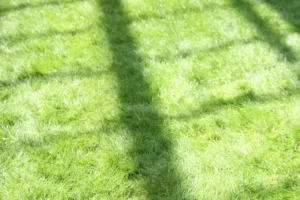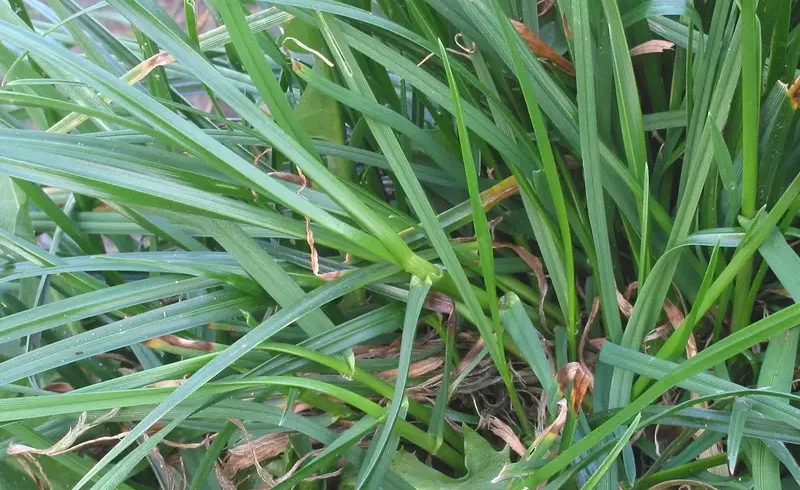
Introduction
Overview of Ryegrass
Ryegrass, scientifically known as Lolium, is a genus of tufted grasses in the bluegrass subfamily of the grass family. Due to its rapid growth rate and hardy nature, it is a popular choice for lawns, pastures, and winter cover crops. Ryegrass is known for its ability to thrive in cool, temperate climates and its high tolerance for heavy foot traffic, making it a versatile choice for various applications.
There are several types of ryegrass, including perennial ryegrass, annual ryegrass, and Italian ryegrass, each with unique characteristics and uses. Perennial ryegrass is often used for lawns and athletic fields due to its delicate texture and fast establishment rate. In contrast, annual ryegrass and Italian ryegrass are used as cover crops to improve soil structure and prevent erosion.
Importance and Relevance of Ryegrass
The importance of ryegrass extends beyond its use in lawns and pastures. It plays a crucial role in soil conservation, acting as a cover crop during winter to prevent erosion and improve soil health. Its dense root system helps to break up hard soil and improve water infiltration, making it beneficial for crop rotation systems.
Furthermore, ryegrass is a valuable forage crop for livestock due to its high nutritional content and palatability. It provides a reliable animal food source during the cooler months when other grasses are less productive. The relevance of ryegrass in agriculture and landscaping underscores its importance and the need to understand its growth habits, benefits, and challenges.
History and Origin of Ryegrass
Origin of Ryegrass
Ryegrass originates from Europe, Asia, and North Africa. It was widely used in these regions for centuries before being introduced to other parts of the world. The grass’s adaptability to different climates and soils made it a popular choice for pastures and lawns, leading to its spread across the globe.
The first documented use of ryegrass dates back to the 16th century in Europe. It was primarily used as a forage crop for livestock due to its high nutritional content and palatability. Over time, different types of ryegrass were developed to cater to specific needs and environments. For instance, perennial ryegrass was favored for its durability and year-round growth, while annual ryegrass was valued for its fast growth rate and used as a cover crop.
Spread of Ryegrass
The spread of ryegrass outside its native regions began in the 17th century when European settlers introduced it to North America. It quickly adapted to the new environment and became a staple forage crop in many parts of the continent. Today, ryegrass is grown in all 50 states of the U.S., with the highest production in the Pacific Northwest, the Midwest, and the Northeast.
The spread of ryegrass to other parts of the world followed a similar pattern. It was introduced to Australia in the early 19th century and is now a significant pasture grass in temperate regions. In South America, ryegrass was introduced in the late 19th century and has become a vital component of the region’s pasture systems.
The widespread use of ryegrass worldwide is a testament to its adaptability and usefulness. Its ability to thrive in various climates and soils and its benefits as a forage and cover crop has contributed to its global popularity.
Types of Ryegrass
Annual Ryegrass
Annual ryegrass, also known as Italian ryegrass or Lolium multiflorum, is a cool-season grass used as a cover crop or temporary turf. Unlike perennial ryegrass, annual ryegrass completes its life cycle in one year or less if conditions are unfavorable. It is known for its rapid germination and growth rate, which makes it an excellent choice for quick ground cover.
Annual ryegrass is often used as a cover crop to prevent soil erosion, suppress weeds, and improve soil structure. It has a robust root system that helps to break up compacted soil and increase water infiltration. In addition, annual ryegrass can extract nutrients from deeper soil layers and bring them to the surface, improving nutrient availability for subsequent crops.
Italian Ryegrass
Italian ryegrass, a variant of annual ryegrass, is a vigorous grass often used to oversee warm-season pastures. It is highly adaptable and can tolerate various soil conditions, making it a versatile choice for many applications. Italian ryegrass is known for its high yield potential and excellent forage quality, making it a popular choice for livestock feed.
Italian ryegrass requires regular watering and fertilization to maintain its health and productivity. It is susceptible to several diseases, including rust and leaf spots, so regular monitoring and appropriate treatment are necessary. Despite these challenges, Italian ryegrass’s benefits, such as its rapid growth rate and high forage quality, often outweigh the downsides.
Hybrid Ryegrass
Hybrid ryegrass, a cross between Italian and perennial ryegrass, combines the rapid establishment and high yield of Italian ryegrass with the persistence and hardiness of perennial ryegrass. It is often used in pastures and hay fields where a high-quality, persistent forage is needed.
Hybrid ryegrass can tolerate various soil conditions and has excellent disease resistance. It requires regular watering and fertilization to maintain its health and productivity. Hybrid ryegrass can provide high-quality forage with proper care and management for several years.
Perennial Ryegrass
Perennial ryegrass is a cool-season grass known for its quick germination rate and fine, glossy texture. It is native to Europe, Asia, and North Africa but has been introduced to and thrives in many other parts of the world. Perennial ryegrass is often used for lawns, sports fields, and golf courses due to its ability to withstand heavy foot traffic and appealing aesthetic qualities.
One of the critical characteristics of perennial ryegrass is its durability. It has a high tolerance for wear and tear, making it an excellent choice for high-traffic areas. Additionally, it has a rapid growth rate, allowing it to recover quickly from damage. However, it’s worth noting that while perennial ryegrass is hardy, it does require regular watering and fertilization to maintain its health and appearance.
Characteristics of Ryegrass
Physical Characteristics
Ryegrass is a cool-season grass known for its fine to medium texture and glossy, dark green color. It forms a dense, uniform turf that can withstand heavy foot traffic, making it an excellent choice for lawns, sports fields, and other high-traffic areas. The leaves of ryegrass are folded in the bud, unlike many other grasses, which are rolled, giving it a distinct appearance.
Ryegrass has a bunch-type growth habit, which grows in clusters rather than spread out via stolons or rhizomes. This growth habit contributes to its dense, carpet-like appearance. The grass blades are smooth and glossy on the top, with a dull underside. Ryegrass also has a unique characteristic known as an “auricle,” a small ear-like projection at the base of the leaf blade, which helps to distinguish it from other grass species.
Growth Patterns and Climate Preferences
Ryegrass thrives in cool, temperate climates and grows most vigorously during the spring and fall when temperatures are moderate. It can tolerate light frosts but may be dormant during harsh winters or hot, dry summers. Ryegrass prefers full sun but can tolerate light shade.
One of the critical characteristics of ryegrass is its rapid germination and growth rate. It is one of the quickest grasses to establish, often germinating in 5 to 10 days. This rapid growth rate makes it an excellent choice for quick ground cover and erosion control. However, this fast growth also means that ryegrass requires regular mowing to maintain a neat appearance.
Ryegrass is adaptable to various soil types but prefers well-drained, fertile soils with a pH between 5.5 and 7.0. It has a moderate to high tolerance for soil salinity, making it suitable for coastal areas or sites with poor-quality water. However, ryegrass does not tolerate waterlogged soils or prolonged periods of drought. Regular watering is necessary to maintain health and appearance, particularly during dry periods.
Benefits of Ryegrass
Advantages of Lawns and Pastures
Ryegrass offers several benefits when used in lawns and pastures. Its rapid germination rate and vigorous growth make it an excellent choice for quick ground cover, helping to quickly establish a lush, green lawn. Its dense growth habit also helps to crowd out weeds, reducing the need for weed control measures.
In addition to its aesthetic appeal, ryegrass is highly durable and can withstand heavy foot traffic, making it an excellent choice for sports fields, playgrounds, and other high-traffic areas. Its OK to medium texture and dark green color makes it a popular home lawn choice.
For pastures, ryegrass provides a high-quality forage for livestock. It is highly palatable and nutritious, with a high protein content and excellent digestibility. Its rapid growth and regrowth also ensure a consistent forage supply throughout the grazing season.
Environmental Benefits
Ryegrass also offers several environmental benefits. As a cover crop, it helps to prevent soil erosion by stabilizing the soil with its dense root system. It also improves soil structure by breaking up compacted soil layers, increasing water infiltration, and reducing runoff.
Ryegrass can also enhance soil fertility by recycling nutrients from deeper soil layers. Its deep root system can extract nutrients beyond the reach of other crops, bringing them to the surface where subsequent crops can utilize them. This can reduce the need for synthetic fertilizers, contributing to more sustainable farming practices.
Furthermore, ryegrass has a high carbon sequestration potential, helping to mitigate climate change by capturing and storing carbon from the atmosphere. Its dense growth habit also provides beneficial insects and wildlife habitats, contributing to biodiversity.
Cultivation and Maintenance of Ryegrass
Planting Process and Best Practices
Ryegrass can be planted by sowing seeds directly into the soil. The best time to plant ryegrass depends on the climate and the intended use. In cool climates, ryegrass is typically planted in the early fall or spring when temperatures are moderate. Ryegrass is often planted in the late summer or early fall as a winter cover crop in warmer climates.
Before planting, the soil should be prepared by removing any existing vegetation and loosening the top layer of soil. The ryegrass seeds can then be spread evenly over the soil surface. For best results, the seeds should be lightly covered with soil or compost to protect them from birds and to help retain moisture.
After planting, the area should be watered regularly until the ryegrass is well established. Ryegrass seeds typically germinate within 5 to 10 days and can establish an entire lawn within 4 to 6 weeks under optimal conditions.
Maintenance Requirements and Tips
Once established, ryegrass requires regular maintenance to keep it healthy and attractive. This includes regular mowing, watering, and fertilization.
Ryegrass proliferates and may need to be mowed weekly during the growing season to maintain a neat appearance. The ideal mowing height depends on the type of ryegrass and intended use, but lawns should generally be kept between 1.5 to 2.5 inches.
Regular watering is also essential, particularly during dry periods. However, ryegrass is moderately drought-tolerant and can survive short periods of dryness. Overwatering should be avoided as it can lead to disease problems.
Ryegrass benefits from regular fertilization to maintain its color and growth. A balanced lawn fertilizer can be applied in the spring and fall. However, over-fertilization should be avoided as it can lead to excessive growth and increased disease susceptibility.
Finally, ryegrass can be susceptible to several diseases, including rust, leaf spot, and gray leaf spot. Regular monitoring and appropriate treatment can help manage these potential issues.
Uses of Ryegrass
Lawns and Recreational Areas
One of the most common uses of ryegrass is in lawns and recreational areas. Its OK to medium texture, dark green color, and ability to withstand heavy foot traffic make it an excellent choice for home lawns, parks, and sports fields. Its rapid germination and growth rate also make it a popular choice for overseeding warm-season grasses in the fall to maintain a green lawn during winter.
In addition to its aesthetic appeal, ryegrass offers functional benefits for lawns and recreational areas. Its dense growth habit helps crowd weeds, reducing the need for weed control measures. Its robust root system also helps to prevent soil erosion, making it a good choice for sloped areas or sites with poor soil.
Agriculture and Pastures
Ryegrass is also widely used in agriculture, particularly as a forage crop for livestock. It is highly palatable and nutritious, providing a high-quality animal food source. Its rapid growth and regrowth also ensure a consistent forage supply throughout the grazing season.
In addition to its use as a forage crop, ryegrass is often used as a cover crop in crop rotation systems. It helps improve soil structure, prevent erosion, and recycle nutrients, contributing to more sustainable farming practices. Its deep root system can also help to break up compacted soil layers, improving water infiltration and reducing runoff.
Erosion Control and Environmental Restoration
Ryegrass is often used for erosion control and environmental restoration projects due to its rapid growth and robust root system. It can quickly stabilize soil on slopes and embankments, preventing erosion and protecting water quality.
Ryegrass is also used in reclamation projects to restore disturbed lands, such as mining or construction sites. Its ability to grow in various soil types and conditions and its environmental benefits makes it a valuable tool for these applications.
Challenges and Controversies Surrounding Ryegrass
Invasiveness and Spread
One of the significant challenges associated with ryegrass is its potential to become invasive. Ryegrass has a rapid growth rate and can quickly spread, out-competing native plants and altering ecosystems. This can be particularly problematic in natural areas or regions where ryegrass is not native. Managing the spread of ryegrass can be difficult and time-consuming, often requiring ongoing monitoring and control measures. More details about this challenge can be found on Crabgrass Lawn and Lawn Bull.
Resistance to Herbicides
Another significant challenge is the development of herbicide resistance in ryegrass populations. Overusing certain herbicides can lead to the evolution of resistant strains of ryegrass, making weed control more difficult. This has been a particular issue with glyphosate, a commonly used herbicide. Glyphosate-resistant strains of ryegrass have been reported in several regions, posing a significant challenge for farmers and land managers. This issue is discussed in more detail in an article by the LSU AgCenter.
Maintenance Requirements
While ryegrass has many benefits, it also has high maintenance requirements. It requires regular mowing due to its rapid growth rate, and it may require regular watering and fertilization to maintain its health and appearance. These maintenance requirements can be time-consuming and costly, particularly for large lawns or fields. Additionally, ryegrass can be susceptible to several diseases, requiring regular monitoring and potential treatment.
Controversies
Despite its widespread use, there are some controversies surrounding ryegrass. Some people argue that the environmental impacts of ryegrass, particularly its potential to become invasive, outweigh its benefits. Others argue that developing herbicide-resistant strains of ryegrass is a significant concern that needs to be addressed. These controversies highlight the need for careful management and responsible use of ryegrass.
Case Studies
RAD-seq Strategy in Italian Ryegrass
A recent study published in the BMC Plant Biology journal and available on PubMed and ResearchGate demonstrated the effectiveness of the RAD-seq strategy for the variety distinction of Italian ryegrass. The study found that the identification capacity of Italian ryegrass varieties peaked when 500 SNPs were used. The findings suggest that RAD-seq could be an effective alternative method for the variety distinction of Italian ryegrass.
This case study is significant as it highlights the potential of advanced genetic techniques in improving our understanding and utilization of ryegrass. Such techniques could lead to new ryegrass varieties with improved characteristics, such as increased drought tolerance or disease resistance.
Ryegrass in Agriculture
An article titled “Grasses for Farmers” on Cotswold Seeds provides a practical case study of using ryegrass in agriculture. The article notes that ryegrass, which comes in many forms, is the most widely sown of all grasses. Ryegrasses have high sugars and respond to nitrogen fertilizer better than other grass species. These qualities have made ryegrass a popular choice among farmers.
This case study underscores the practical benefits of ryegrass in agricultural settings. Its ability to respond well to nitrogen fertilizer can lead to higher yields, while its high sugar content can provide a nutritious food source for livestock.
Ryegrass in Golf Course Management
A set of flashcards on Quizlet provides insights into using ryegrass in golf course management. The flashcards suggest that ryegrass is a popular choice for establishing new putting greens due to its delicate texture and resistance to wear and tear.
This case study highlights the versatility of ryegrass and its suitability for a range of different uses. Its fine texture and durability make it an excellent choice for high-traffic areas like golf courses, demonstrating its value in agricultural and recreational settings.
The Future of Ryegrass
Climate Adaptability
As a cool-season grass, ryegrass grows best in spring and fall in northern climates and will go dormant in the high heat of summer and after the first wintery frost. It’s an excellent option for keeping lawns green in winter in southern climates. This adaptability to different climates makes Ryegrass a versatile choice for various regions. As climate patterns continue to change, the adaptability of ryegrass could become even more valuable. More details about this can be found on The Spruce.
Furthermore, ryegrass’s ability to grow in various soil types and conditions and its environmental benefits make it a valuable tool for climate change mitigation efforts. Its deep root system can help to sequester carbon, while its dense growth habit can help to prevent soil erosion and protect water quality.
Agricultural Uses
Perennial ryegrass is the most commonly used feed for dairy cows in Australia. It’s high palatability and nutritional value and rapid growth and regrowth ensure a consistent supply of forage throughout the grazing season. As the demand for sustainable and efficient agricultural practices continues to grow, the use of ryegrass as a forage crop could increase. More information about this can be found on Dairy Australia.
In addition to its use as a forage crop, ryegrass is often used as a cover crop in crop rotation systems. It helps improve soil structure, prevent erosion, and recycle nutrients, contributing to more sustainable farming practices. Its deep root system can also help to break up compacted soil layers, improving water infiltration and reducing runoff.
Breeding and Genetic Improvements
Breeders are continually working on creating new ryegrass varieties with improved characteristics. For example, DLF, Germinal, DSV, and Barenbrug breeders focus on creating new ryegrass varieties with an annual production of 90,000 metric tonnes. The targeted improvements will depend on the needs and conditions of the regions where the ryegrass is being grown. More details about this can be found on European Seed.
These breeding efforts could lead to the developing of ryegrass varieties with increased drought tolerance, disease resistance, or nutritional value. Such improvements could further enhance the versatility and usefulness of ryegrass in the future.
Conclusion
A Versatile Grass Species
In conclusion, ryegrass is a versatile grass species with many uses. Its adaptability to different climates and soil conditions and its environmental benefits make it a valuable tool for both agricultural and landscaping purposes. Whether it’s providing a lush, green lawn, serving as nutritious forage for livestock, or helping to prevent soil erosion, ryegrass has proven its worth time and time again.
As we look to the future, the versatility of ryegrass is likely to become even more valuable. With climate patterns continuing to change, ryegrass’s ability to grow in various conditions could become increasingly important. Furthermore, as the demand for sustainable and efficient agricultural practices continues to grow, the use of ryegrass as a forage crop and cover crop could increase.
The Future Looks Green
The future of ryegrass looks promising. With ongoing breeding efforts to improve the characteristics of ryegrass, we can expect to see new varieties with increased drought tolerance, disease resistance, or nutritional value. These improvements could further enhance the versatility and usefulness of ryegrass, making it an even more valuable resource in the future.
In conclusion, whether you’re a farmer looking for a reliable forage crop, a homeowner seeking a lush, green lawn, or a land manager aiming to prevent soil erosion, ryegrass offers a range of benefits that make it a worthy consideration. Its past, present, and future make it clear that ryegrass is more than just grass—it’s a valuable resource with a bright future.










